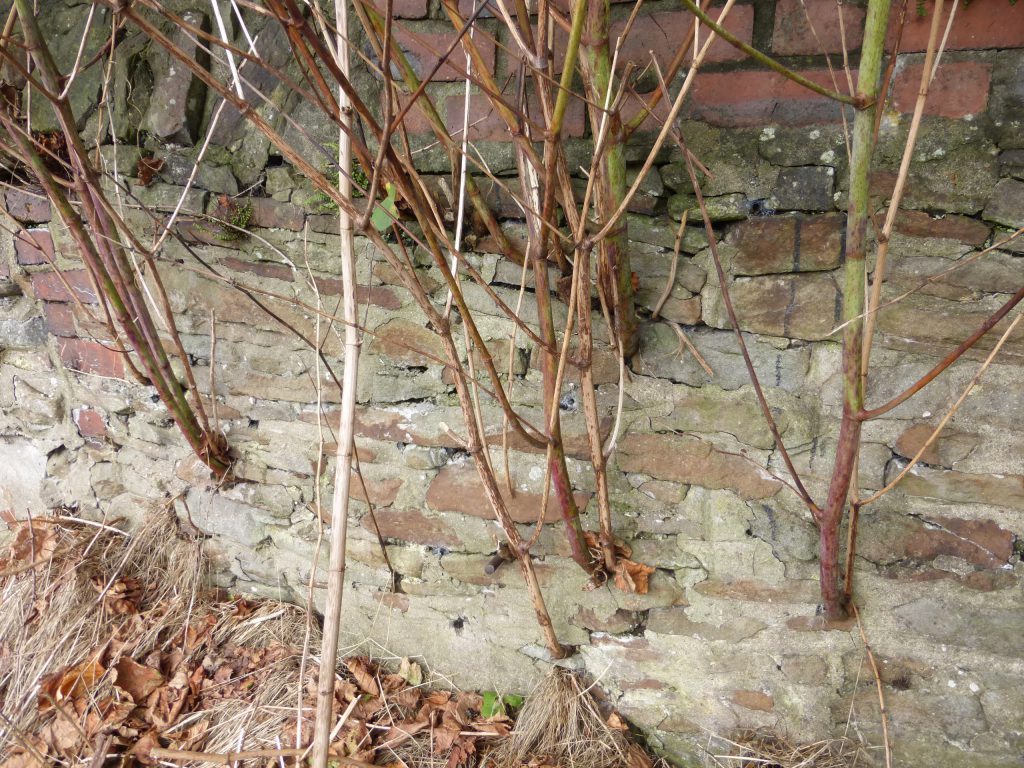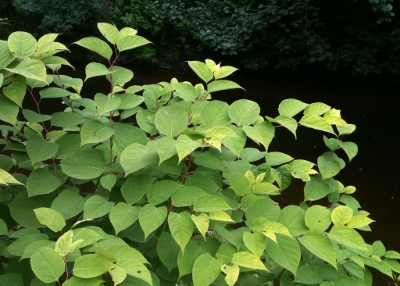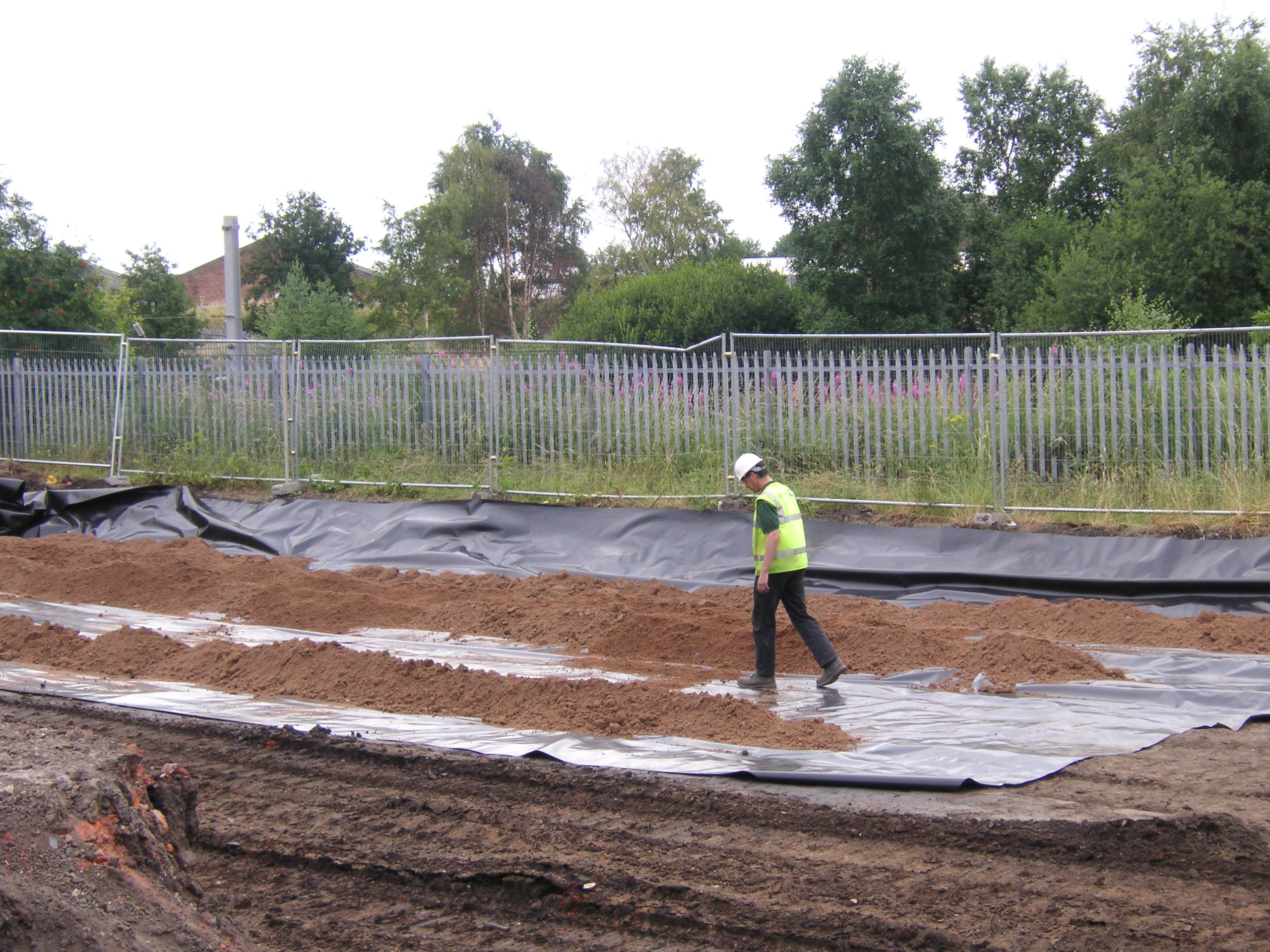Is Japanese Knotweed Dangerous?
18-01-2019
Last updated 08-03-2023

One of the most common questions we are asked is: “is Japanese knotweed dangerous?”.
Part II of Schedule 9 of the Wildlife And Countryside Act (1981, as amended) lists those non-native plant species that, due to their potentially invasive and damaging nature, it is an offence for anyone to plant or to otherwise cause them to grow in the wild.
There are over 50 plants on this list, and of these, only Giant Hogweed (Heracleum mantegazzianum) could be considered “dangerous” as it can pose a public health and safety risks (the sap contains a toxic chemical that causes photosensitivity of the skin, which can result in painful blistering when exposed to sunlight).
What is so dangerous about Japanese knotweed?
Japanese knotweed isn’t dangerous per se. It doesn’t cause direct harm to people, animals or other plants. However, it can cause damage to built structures, hard surfaces and will outcompete and dominate natural vegetation, which can significantly affect local biodiversity.
Is Japanese knotweed poisonous?
Japanese Knotweed is not poisonous. It’s edible and harmless to humans and animals. Some people even use it in recipes such as knotweed crumble and beer! It has also been claimed to have impressive life-extending and anti-ageing properties (if you believe the marketeers…).
Does Japanese knotweed cause burns?
Japanese knotweed does not cause burns like the sap of some other species can, such as Giant Hogweed.
What happens if you touch Japanese knotweed?
If you touch Japanese knotweed there is no immediate danger to you as it is not poisonous. The only issue if you come into contact with Japanese knotweed is that you might accidentally take pieces of it with you and spread it to surrounding land.
Is Japanese knotweed harmful to humans?
Japanese knotweed is not directly harmful to humans. It is not toxic. There could, however, be a risk of scratches, particularly to the eyes, if you wander through a patch of winter canes and snap brittle tips of the canes, which can be quite sharp.
Despite not being harmful to humans, it can cause significant property damage if not eradicated. The perception of harm also has a blighting effect, whereby prospective purchasers are put off buying property if they know it to be affected by knotweed. This can have a substantial diminution in value effect, such that people expect to pay less for knotweed-affected properties.
Can people eat Japanese knotweed?
People can and do eat Japanese knotweed. In Japan there are many different recipes and ways that it can be cooked and eaten. The young stems in springtime are particularly tender and make a good ingredient in stir-fries.
What does knotweed taste like?
Japanese knotweed contains malic and oxalic acids, which are also found in rhubarb and apples. These give Japanese knotweed a pleasantly tart flavour like rhubarb – although it is slightly more ‘earthy’.
Is Japanese knotweed harmful to pets?
Japanese knotweed is not poisonous to pets. In fact has been used as a nutritious animal feed, particularly in its countries of origin, such as Japan. Goats have been known to be quite partial to its luscious green leaves; Bournemouth council implemented the use of goats as part of their weed control management plan in 2009.
How does Japanese knotweed harm the environment?
Although knotweed is not directly harmful to humans, as it’s an invasive species, it can be incredibly damaging to the environment, both natural and manmade.
Japanese knotweed is vigorous and capable of rapidly developing extensive stands, which can dominate natural landscapes and outcompete native plants (helped in part by its releasing allelopathic chemicals into the soil which hinder the growth of nearby plants), the result of which can be a drastic reduction in biodiversity.
Along riverbanks, it is particularly problematic and can exacerbate flooding due to it causing large areas of the bank to be exposed when the stems die back in winter.
The plant’s ability to form large monocultures is even more impressive considering that just the female plant was originally introduced to the UK in the mid-1800s, meaning it almost never produces viable seedlings. Thus, it can only spread vegetatively from cuttings.
This means it spreads either by rhizome (root) growth or when soil containing rhizome fragments is moved from one area to another, usually from human interference (often fly-tipping), but this can also occur naturally, such as during floods.
What happens if you burn Japanese knotweed?
The dried stems of knotweed can be burnt quite easily. However, this won’t affect the deep rhizome system in the ground, which provides the resources to produce new shoots. Burning is, therefore, not an effective way to try to control Japanese knotweed.
Can Japanese knotweed be dangerous for a property?
Japanese knotweed is particularly problematic to the building trade, both at commercial sites where construction of new development occurs and at residential properties.
While stories of Japanese knotweed breaking through concrete are wide of the mark, it can further aggravate structural issues within properties by growing through existing weaknesses, openings and cracks in buildings, services and walls. The problem is, however, not uncontrollable. In fact, with the right treatment plan, Japanese knotweed is quite manageable.
With this in mind, buying a property with knotweed can be perfectly acceptable, providing you follow the correct procedures.
Whether you have land on which knotweed is growing or you plan to purchase a property affected by knotweed, time spent researching the risks posed and gaining advice from experts is essential.
So even though Japanese knotweed might not literally be “dangerous”, it is a plant that does require respect and careful planning to appropriately manage.
What should I do if I discover knotweed growing on my land?
In the first instance, you need to be sure that you’ve identified it correctly. There is a wealth of information on the web for identifying Japanese knotweed. We also have a detailed guide to plants that look like Japanese knotweed. However, if you are still in doubt, you can use our free knotweed identification service to submit your photos for expert review.
Is it illegal to have Japanese knotweed growing on my land?
Although it is not illegal to have knotweed on your property, such as your garden, it is illegal to allow it to spread from your land to another property or into the wild. More commonly, and more significantly (in terms of potential costs), allowing it to affect other properties could expose you to the very real risks of litigation (such as in the landmark knotweed ruling against Network Rail).
How can I avoid the risks & dangers associated with Japanese knotweed?
By using a suitably qualified and experienced company like Phlorum to manage knotweed affecting your land, backed up with an insurance-backed guarantee, you are effectively protecting yourself from these potentially significant property risks.
As PCA-accredited Japanese knotweed specialists, we can undertake a survey of your site or property. Our co-founder, Dr Paul Beckett, is one of the UK’s leading Japanese knotweed expert witnesses, so we can also help with any knotweed legal issues you might have with regard to property risk.



